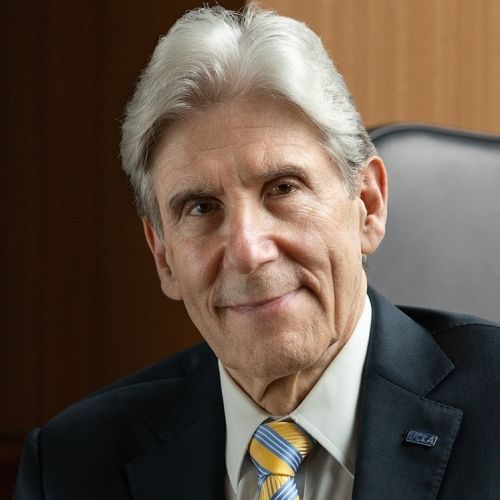In Harm’s Way: UCLA study finds child labor protections lacking in many countries

Despite international commitments made by nearly all of the 193 United Nations (UN) member states, dozens of countries lack important legal protections against children doing work that could be harmful or interfere with their education, a study by the WORLD Policy Analysis Center (WORLD) at the UCLA Fielding School of Public Health has found.
Published today in the International Journal of Sociology and Social Policy, WORLD’s analysis revealed that 41 countries do not protect children and youth under the age of 18 from performing hazardous work — a number that rises to 74 when legal loopholes are taken into account — including, for example, such populous nations as Nigeria and Indonesia. In 47 countries, the minimum legal age for employment is below 15, despite evidence that work at an early age is associated with negative health and education outcomes — and when factoring in legal loopholes, that number rises to 85. Among the countries that allow children younger than 15 to work are Bolivia, where it is estimated that one quarter of all 5- to 14-year-olds are performing labor; Benin, where approximately half of all 5- to 14-year-olds are in child labor; and Nepal, where an estimated 37% of 5- to 14-year-olds are working.
The study also found that 41 countries do not protect 14-year-olds from working six or more hours on a school day, and 84 countries do not legally guarantee that 16-year-olds have at least 12 hours off from work in a day, leaving children and youth with little time for rest, study, and sleep. An economically diverse group of countries fall into one of these two categories, including Russia, Mexico, Israel, Japan and Zimbabwe.
“There is no justification for ever allowing children to perform hazardous work,” said Dr. Jody Heymann, senior author of the study, founding director of the WORLD Policy Analysis Center and a distinguished professor in the UCLA Fielding School of Public Health. “While countries around the world have recognized this, we still have a long way to go to ensure that the laws are in place at a national level to protect all children from these types of jobs.”
"While part-time work in a clean and safe environment and jobs that provide vocational training for adolescents can sometimes be beneficial, there is widespread agreement about the negative consequences of work at an early age,” added Nicolas de Guzman Chorny, lead author of the study. “Evidence shows that when children and youth work more than a few hours, or in conditions that expose them to hazards, it can be extremely detrimental to their development, educational achievement and health, in ways that are nearly impossible to overcome in the long term.”
Worldwide in 2016, there were an estimated 152 million child laborers ages 5 to 17, with 73 million of them engaged in hazardous work, according to the International Labour Organization (ILO). Child labor exists in countries of all income levels and across all regions. Africa was the continent with the highest number of child laborers (72.1 million), as well as the highest proportion of children under 18 who worked (20%). Worldwide, the majority of child laborers (71%) worked in the agricultural sector, while 17% worked in the service sector and 12% worked in goods-producing industries. Close to one-in-three child laborers ages 5 to 14 did not attend school.
Research from multiple countries has found that child labor is associated with fewer years of education completed. Engaging in labor at an early age is associated with lower school attendance and academic achievement. Studies from around the world have also documented the negative health impacts of child labor, including increased risk of injury, poor mental health, and verbal, physical, and sexual abuse. Additionally, the health effects of working at an early age result in an increased likelihood of experiencing poor health outcomes as adults.
The ILO’s Minimum Age Convention (Convention 138, or C138), adopted in 1973 and ratified by 169 UN member states as of 2016, requires countries to establish national policy frameworks to abolish child labor and increase the minimum age for employment in national laws. Despite these commitments, the WORLD study noted that there has been little transparency and accountability around whether countries have followed through with legislation protecting children from potentially harmful work.
WORLD’s analysis assessed the legislation of all 193 UN member states related to work that is likely to be hazardous, work that interferes with children’s education, and work that is harmful to their healthy development. Among the other findings:
- By age 16, children are protected from working six or more hours on a school day in only 9% of countries.
- Nearly one in four countries (23%) do not establish the minimum age for light work (i.e., work that is not harmful to health or development and does not interfere with education) at 13 or older, as is outlined in the C138 guidelines. Eleven percent of these countries have no minimum age for such work.
- Only 55% of countries guarantee at least 12 hours off from work at night to children and youth until they are at least 16, in accordance with the C138 guidelines.
The researchers found that for the vast majority of measures that were examined, countries that have ratified C138 have stronger legal protections for child labor than those that have not.
“Fully implemented national legislation providing protection without exceptions, especially against hazardous work and work that interferes with education and healthy development, remains foundational to reducing the rate and impact of child labor,” de Guzman said. “Our analysis indicates that many countries have not taken this critical step.”
Heymann noted that anti-poverty policies are also vital to that strategy. Minimum and living wage policies for adults, for example, can assist families in achieving economic security without depending on their children for income. Bans on child labor can also complement poverty-reduction efforts, by keeping children in school and thereby increasing their earning potential as adults.
“While laws alone are only a first step, and implementation and enforcement are essential, we will not achieve meaningful progress without bans on child labor,” Dr. Heymann said.
The UCLA Fielding School of Public Health, founded in 1961, is dedicated to enhancing the public's health by conducting innovative research, training future leaders and health professionals from diverse backgrounds, translating research into policy and practice, and serving our local communities and the communities of the nation and the world. The school has more than 600 students from more than 25 nations engaged in carrying out the vision of building healthy futures in greater Los Angeles, California, the nation and the world.
Faculty Referenced by this Article

Automated and accessible artificial intelligence methods and software for biomedical data science.

EMPH Academic Program Director with expertise in healthcare marketing, finance, and reproductive health policy, teaching in the EMPH, MPH, MHA program

Dr. Michelle S. Keller is a health services researcher whose research focuses on the use and prescribing of high-risk medications.

Robert J. Kim-Farley, MD, MPH, is a Professor-in-Residence with joint appointments in the Departments of Epidemiology and Community Health Sciences
Nationally recognized health services researcher and sociomedical scientist with 25+ years' experience in effectiveness and implementation research.

Professor of Community Health Sciences & Health Policy and Management, and Associate Dean for Research

Dr. Anne Rimoin is a Professor of Epidemiology and holds the Gordon–Levin Endowed Chair in Infectious Diseases and Public Health.

Industrial Hygiene & Analytical Chemistry

Dr. Joseph Davey is an infectious disease epidemiologist with over 20 years' experience leading research on HIV/STI services for women and children.

Dr. Ron Andersen is the Wasserman Professor Emeritus in the UCLA Departments of Health Policy and Management.

Associate Professor for Industrial Hygiene and Environmental Health Sciences

Dr. Hankinson is a Distinguished Professor of Pathology and Laboratory Medicine, and of EHS, and Chair of the Molecular Toxicology IDP

Director of Field Studies and Applied Professional Training

Assistant Dean for Research & Adjunct Associate Professor of Community Health Sciences







































































































































































































